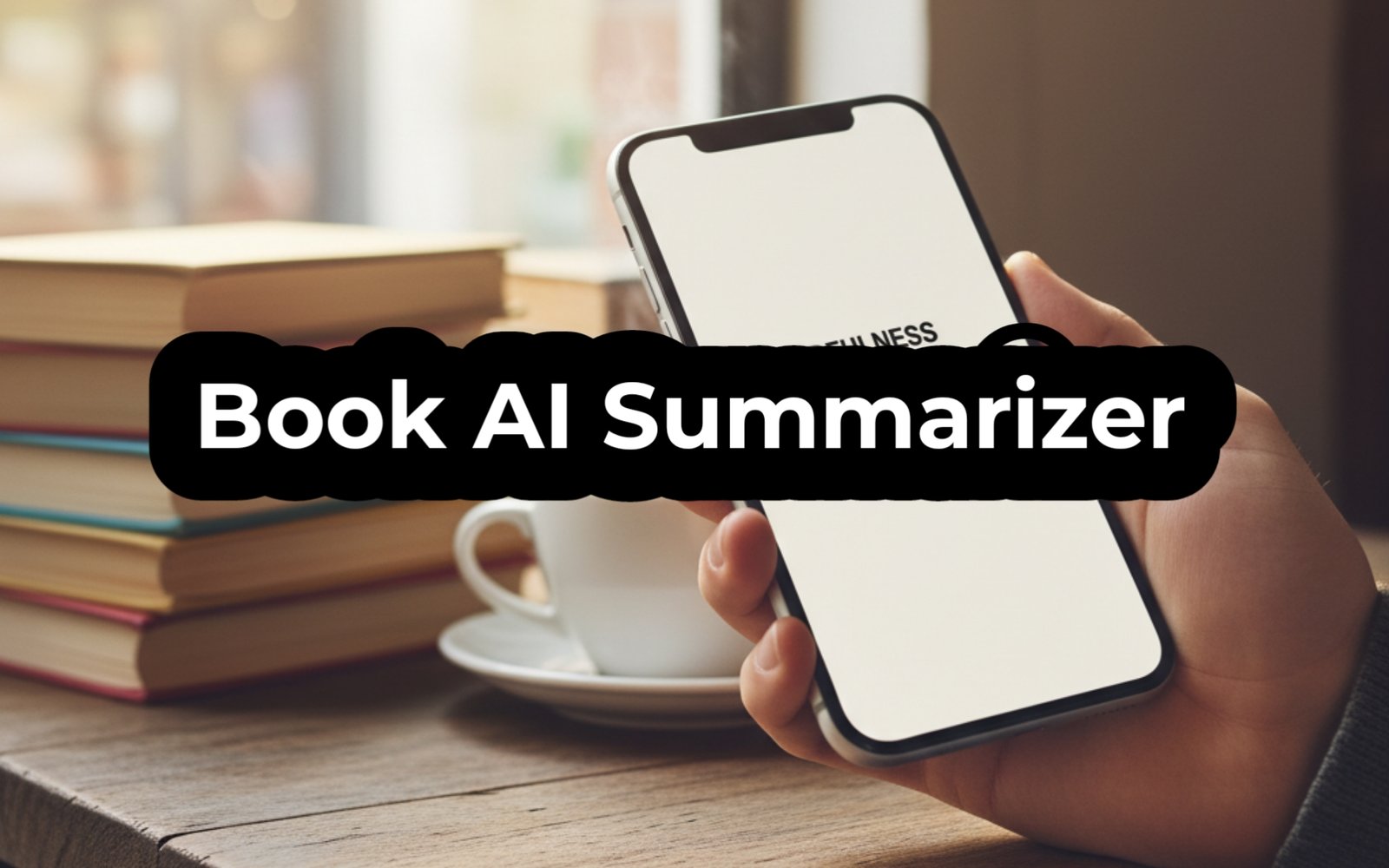Introduction
If you’re short on time but hungry for ideas, a book summarizer using AI can be a game changer. These tools condense long books into digestible summaries and key takeaways so you can capture the main ideas in minutes without skimming every page.
In this guide I’ll show how AI book summary systems work, which book summarizing tools are worth your attention, and how to summarize PDFs, articles and whole books step-by-step. We’ll also cover pros/cons, privacy issues, and a short case study so you can try this today.
This post is written for students, researchers, authors, content creators, and busy professionals who want reliable ai book summary workflows that actually save time.
What is AI book summarizer?
A book summarizing tool is software that reads long text (books, PDFs, chapters) and returns a condensed version with main points, themes or action items. These systems may be extractive (pulling out sentences) or abstractive (generating new condensed text).
Why it matters:
- A good book summarizer using AI helps you decide whether to read a full book, pick key quotes for content, or prepare a rapid briefing.
Hugging Face: Summarization docs.
How AI book summary models actually work
Core tech behind a book summarizing tool is transformer-based sequence-to-sequence modeling (e.g., BART, PEGASUS). These models are pre-trained on huge corpora then fine-tuned for summarization tasks. They produce human-like, abstractive summaries when tuned well.
Practical note:
- Extractive summaries are safer and accuracy;
- Abstractive summaries read better but may hallucinate facts.
That tradeoff matters when using a book summarizer using AI for research.
BART paper & PEGASUS research.
Best book summarizing tools overview
There are consumer and research-grade tools: Blinkist (curated summaries), SMMRY (fast web summarizer), Scholarcy (academic), PDF.ai and other PDF-focused tools.
Choose a tool based on file types (epub, mobi, PDF) and output style (bulleted vs narrative).
If you want automation and integrations (API access, Slack, Notion), prioritize platforms offering APIs. That makes a book summarizing tool part of your workflow.
Free book summarizing tool options to try today
Not ready to pay? Try free options like SMMRY or browser-based summarizers to test the concept before committing. Free tools are great for short articles, though they may limit length or features.
Tip: Combine a free book summarizer using AI with a manual skim: run an automated summary, then validate by reading intros and chapter headings.
SMMRY free summarizer.
Using AI book summarizer to summarize PDFs
Many book excerpts and academic chapters are PDFs — use dedicated PDF summarizers (PDF.ai, Google Workspace / Gemini features, Adobe Acrobat AI) to extract text and summarize. PDF-focused tools handle large contexts and page parsing better.
Pro tip: when asked to “summarize pdf with ai,” choose tools that keep source references so you can trace claims back to page numbers.
PDF.ai resources.
How to use a book summarizing tool (step-by-step)
- Upload the book file (PDF/EPUB) or paste the chapter text.
- Choose summary type: bullet points, TL;DR, or chapter-wise summaries.
- Review the summary, validate quotes, and export notes to Notion/Word. This quick flow turns a AI book summarizer into a daily reading habit.
Scholarcy article & features.
Book summarizing tool for students & researchers
Students and researchers can save hours by generating chapter synopses and extracting methodology highlights. Use tools that extract references and create flashcard-style summaries for study. Scholarcy and specialized research tools prioritize extraction for academic content.
Best practice: always cross-check AI summaries against the original methods/results sections when working on literature reviews.
AI Book summarizer for content creators & marketers
Writers and marketers can spin summaries into blog posts, social captions, and newsletter snippets. A book summarizing tool helps extract quotable lines, action items, and chapter-by-chapter hooks for repurposed content.
Pros & Cons of a book summarizer using AI (what to watch)
Pros: saves time, enables quick idea capture, and fuels content creation. Cons: potential hallucinations, condensed nuance loss, and copyright considerations for verbatim extracts. Balance speed with verification to make a AI book summarizer reliable for your use.
Mitigation: prefer tools that include source links or page references and always flag anything you plan to publish.
Hugging Face LLM course on summarization risks
Case study: Using a book summarizer using AI — step-by-step tutorial
Scenario: You have a 300-page nonfiction PDF and 3 hours to prepare a one-page brief. Follow this book summarizing tool workflow:
- Upload PDF to a PDF-capable summarizer (e.g., PDF.ai or SMMRY API).
- Generate chapter-level summaries (ask for 3–5 bullet takeaways per chapter). Download or paste outputs into a note app.
- Manually verify 5 high-impact quotes, add page citations, and synthesize into a one-page executive brief.
Outcome: You’ll have a validated one-page summary ready for meetings in under 60 minutes.
SMMRY API docs.
Privacy, copyright & ethics with AI book summarizer.
Be careful with copyrighted books — republishing AI-generated summaries that reproduce long verbatim excerpts can be a copyright issue. Use summaries as commentary, and always cite the source book and author. For PDFs behind paywalls, check tool permissions before uploading.
If you process sensitive research, check vendor privacy policies and data retention terms before uploading (or run local/offline models when possible).
Adobe Acrobat AI privacy and features.
Choosing the right AI book summarizer tool for you
Decide by file support, output style, accuracy, cost, and integrations. If you need academic rigor pick Scholarcy; if you need short, human-curated summaries pick Blinkist; for full-PDF automation pick PDF-specialists. The best book summarizer using AI matches your workflow.
Checklist: Does it support EPUB/PDF? Can it cite pages? Is there an API?
Conclusion
A book summarizer using AI can compress reading time, power content pipelines, and make research dramatically faster — when used carefully. Start by testing a free tool, validate summaries against source texts, then integrate your favorite into a weekly reading routine.
Curated By: tech domain systems
Visit our website today to learn more about how we can help your business harness the power of an effective online presence for content marketing!



